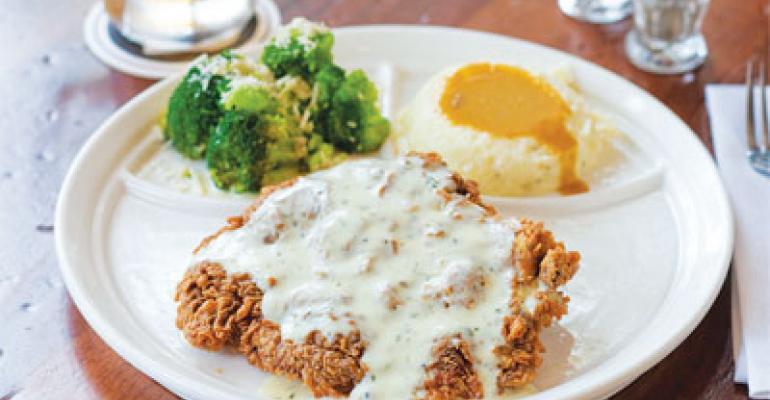It’s not for nothing that some of the most beloved images ever painted or drawn by Norman Rockwell focus on food. Of all his many subjects — work, gossip, the rain — none attaches quite so readily to sentimentality, and none can trigger as big a rush of precedents and memories.
Comfort food has long held special status, casting a warm glow associated with simpler days that can be especially soothing in times of duress, like those of the past few years.
“When times are not so flush, comfort food is what people turn to,” said Ira Freehof, founder and creator of two Comfort Diner restaurants in New York. “It makes them feel better, and there’s something to be said for going out and getting a great meal that you’re familiar with.”
Of course, familiarity needn’t necessarily preclude surprise. To that end, Comfort Diner matches menu staples such as meatloaf and hamburgers with limited-time promotional campaigns offering such items as a different grilled cheese sandwich or a different kind of milkshake every day for a month.
But operators should keep in mind that vast variation is not the name of the comfort-food game, either.
“You don’t want to drift too far from the norm when it comes to really recognizable foods,” said J Amonson, a chef who specializes in dishes like meatloaf and chicken pot pie at Ernie’s Bar & Grill at PGA West in La Quinta, Calif. “There are other ways to be creative. That’s what specials are for. There’s always room for frou-frou fine dining, but with the economy the way it is, people want to go back to a better time in their lives. Comfort food brings people together.”
As does nostalgia for the times we attach to certain kinds of meals, whether real or imagined. At Ted’s Bulletin, a popular new old-fashioned restaurant in Washington, D.C., a screen in the middle of the dining room regularly plays golden-oldie movies and television shows such as “Leave it to Beaver,” “The Wizard of Oz,” “On the Waterfront” and “Breakfast at Tiffany’s.”
“Everybody has a story to tell about what they ate growing up,” said Perry Smith, one of the owners of Ted’s Bulletin, which taps into shared cultural memories of the 1920s, ’30s, ’40s and ’50s. “And those stories are always very emotional stories.”
“We see a resurgence back to grandma’s cooking,” said Ben McLean, general manager of Soul Fish Cafe in Memphis, Tenn. “When our parents grew up, they didn’t eat out every day. So we get a lot of families looking for a real ‘home’ atmosphere.”
Part of that home experience can be delivered by different modes and manners of service, but mostly it comes by way of the food. At Soul Fish Cafe, that includes a changing cycle of fresh vegetables and side dishes, which, according to McLean, includes favorites like Cajun cabbage and macaroni and cheese.
Soul Fish Cafe also offers one of the staples of comfort food for the ages: catfish.
“In small towns especially, a lot of grandmas and grandpas cooked catfish, so it just resonates with people,” McLean said. “People are just crazy about catfish.”

